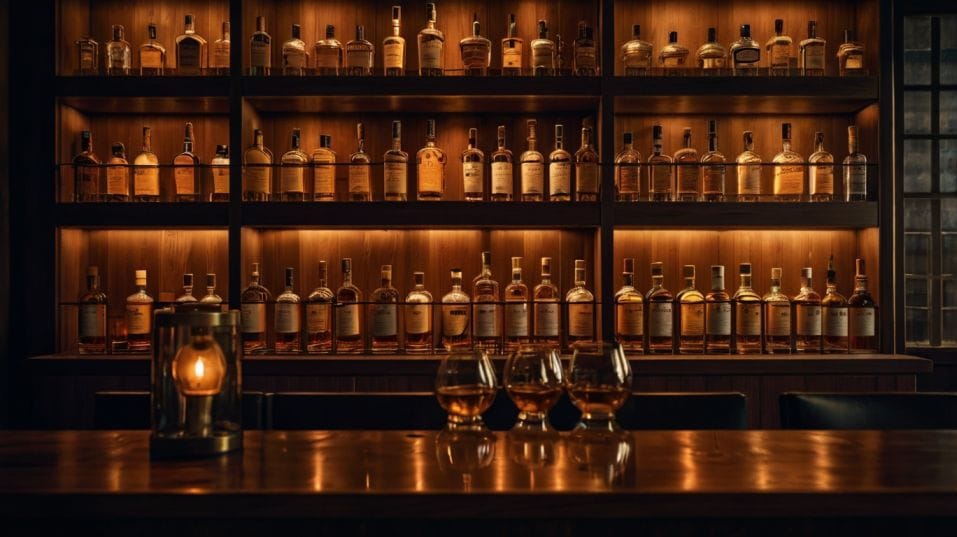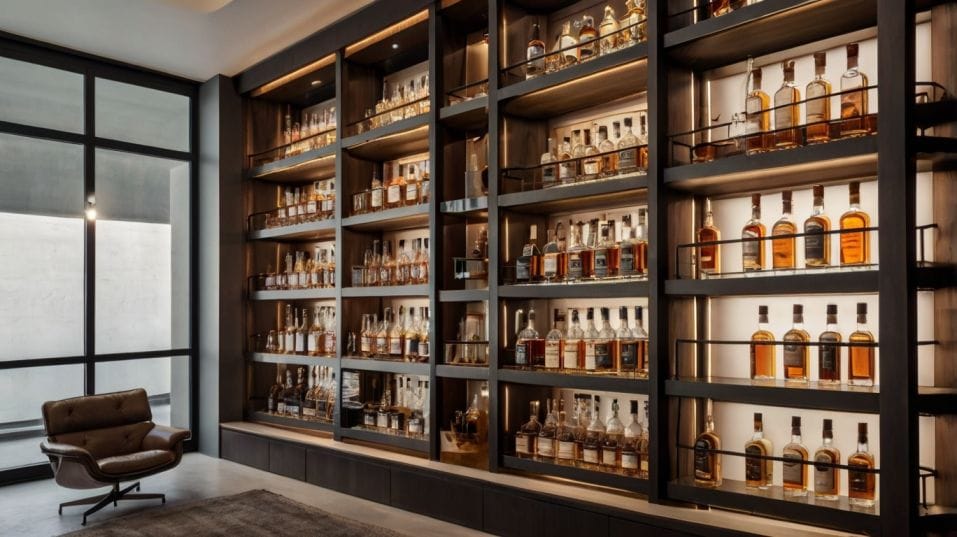How to Display Rare Bottles Safely and Stylishly
Learn how to display rare whiskey like a pro—protect your bottles, elevate your space, and taste with confidence at every step.

What’s the point of collecting rare whiskey if it’s gathering dust in a dim corner or sweating near a radiator? If you’re leveling up from casual sipper to mindful collector, how you display matters just as much as what you collect.
A good setup doesn’t just show off bottles—it protects them, invites tasting, and reflects your journey. Here’s how to build a display that’s as thoughtful and enduring as the spirits on your shelf.
Preserve First, Impress Later
Before you think about wood finishes or lighting angles, dial in the basics of whiskey preservation. These aren’t just technicalities—they’re the guardrails that keep your whiskey from degrading before you even open the bottle.
Light is a flavor killer
Ultraviolet light breaks down chemical compounds in whiskey, especially those responsible for its nuanced aromas and color.
Natural sunlight will bleach a label and ruin a spirit faster than most collectors expect. Even ambient indoor lighting—especially LEDs and fluorescents—can degrade a bottle over time.
If you’re using lighting in your setup, opt for low-heat, low-UV options and never point them directly at the liquid.
Heat accelerates oxidation
Rare whiskey doesn’t need to be refrigerated, but it absolutely needs to be kept out of the hot zone. Keep bottles away from radiators, stoves, and direct sunlight.
Avoid placing them on high shelves in rooms without air circulation—heat rises, and over time, it builds. A steady room temperature between 60°F–70°F is ideal.

Always store bottles upright
Unlike wine, whiskey needs to stay off its cork. High-proof liquid erodes the cork over time, which can compromise both seal and flavor.
Upright storage keeps the spirit away from the cork and minimizes oxidation. If your bottle uses a screw cap or glass stopper, the upright rule still applies—leakage and seal failure are risks no matter the closure.
Protecting your collection should feel seamless. Think more “smart restraint,” less “climate-controlled bunker.”
Design with Purpose, Not Pretense
There’s no perfect look for a whiskey collection. But the best setups—whether minimal or layered—have one thing in common: they’re built to invite interaction.
Start with structure
Floating shelves, built-ins, wall-mounted racks, and cabinets all have their strengths. Shelves create visual access and open up space, but they expose bottles to light and touch.
Cabinets offer control—temperature, light, security—but require more effort to showcase well. If you go the cabinet route, consider adding soft LED strips behind diffused glass. It provides subtle illumination without harming the whiskey.
Custom shelving made from oak, walnut, or reclaimed wood adds natural texture—and can echo the barrels that once held your spirits.
Industrial pipe shelving or matte black steel frames offer a more modern edge, and blend well with minimalist setups. Glass-front displays offer visibility while shielding from dust and handling.
Arrange your bottles to tell a story
Don’t fall into the “oldest in the middle, tallest on the edge” trap. That’s symmetry, not meaning. Try grouping by flavor profile—peaty scotches in one zone, wheated bourbons in another.
Organize by distillery, region, cask type, or even ABV. This structure helps you train your palate by encouraging tasting flights and side-by-side comparisons.
As your collection grows, consider adding a tasting station: a small table, bar cart, or console that holds glassware, pipettes, water droppers, and notebooks.
When your tools are within reach, the habit of tasting—properly—becomes second nature.
Keep It Personal
A strong display isn’t just well-lit or expensive—it’s unmistakably yours. Rare bottles don’t need hype to be significant. They just need context.
Add details that matter to you
Include personal touchstones that reflect your whiskey journey. A small framed photo from your first distillery visit.
A spent bottle that marked a major milestone. A hand-written note from a store pick you hunted down. These quiet details add soul to your space—and they help keep your focus on the why, not just the what.
Avoid over-styling
Whiskey doesn’t need to be staged with cigars, oversized decanters, or props that scream “serious collector.” Keep things grounded in what you actually use and appreciate.
A clean Glencairn, a tasting mat, a journal with margin notes—that’s the gear that supports flavor exploration, not just aesthetics. This is your lab, not a showroom.
Security Is Serious—Even If You’re Just Starting Out
Let’s talk about protection. Not from oxidation or light—but from breakage, theft, or loss.
Protect what matters
Rare bottles come with risk. They’re targets for accidents, curiosity, or worse. So if your collection is out in the open, especially in a shared or high-traffic space, lockable storage is smart.
A locking bar cart or secure display cabinet protects your bottles without killing the vibe. For high-dollar collections, hidden compartments or built-in secure drawers are worth the investment.
Keep records
Start a digital log of what you own. Include photos, proof of purchase, estimated value, and tasting notes.
If something breaks or disappears, you want records—especially if you add bottle insurance down the line. This isn’t overkill. It’s just what good collectors do.
Also: don’t keep everything out at once. Keep backups, duplicates, and ultra-rare bottles in a separate, less-accessible location. Rotate what you display to keep things fresh, and reduce handling of bottles that matter most.
Final Thoughts
Your display is more than decoration—it’s a functional extension of your whiskey journey. Done right, it protects your bottles, elevates your space, and makes tasting more intentional.
Build around preservation, not presentation. Organize for flavor, not ego. Add personal elements that speak to your palate, not the latest hype.
Keep things accessible so you actually reach for your whiskey, not just admire it from across the room.
Take 10 minutes today to assess your current setup. Are your bottles safe from light and heat? Are they easy to browse and taste from? Does your display reflect your journey—or someone else’s Instagram feed?
Start refining. Reorganize a shelf. Install better lighting. Add a tasting notebook. Take this moment to build something lasting—because every rare bottle deserves more than dust and a dark corner.




